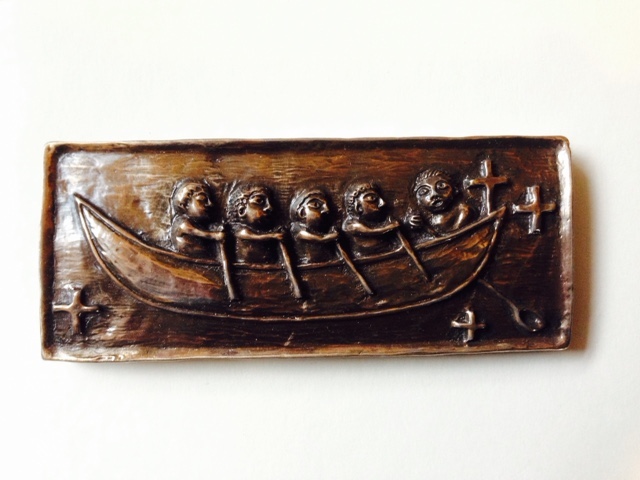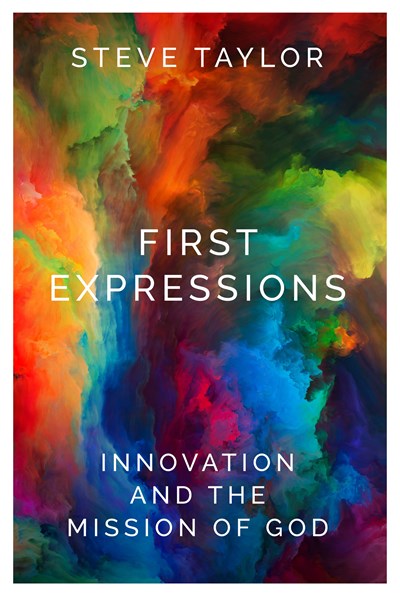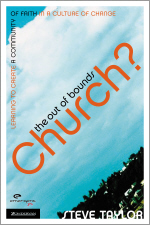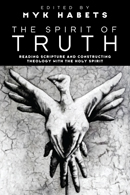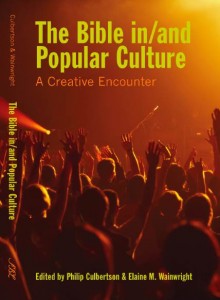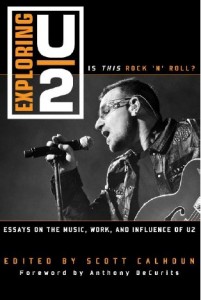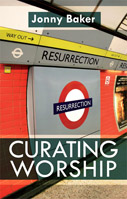Monday, November 16, 2015
Flags as lament: Brooke Fraser for Paris, Beirut, Kenya and violence
Brooke Fraser’s song “Flags” (from the 2010 Flags) album) became a place of thoughtful healing over the weekend. Certainly the weekend brought news that was “plenty of trouble, from which we’re all reeling.” The suggestion, to “listen,” to news of lives flapping empty (“our lives blow about, Like flags on the land)”.
There is something disturbing, challenging even, in the line “My enemy and I are one and the same.” The reminder that Jihadists are humans, who have mothers and brothers, and they will awake today to grieve a dead son. What will they be feeling? And to wonder what drives a human, a person born vulnerable like me, to such extreme acts.
And then her turning to Scripture; with the verses that reference the Beautitudes. In these verses (pun intended) is a place to feel – “to mourn, to weep.” In these verses is faith, not in triumph but in reversal; for the innocents who have fallen and the monsters who have stood; “I know the last shall me first.”
Which gives me a place to act: To listen, to feel, to retain the will to faith. Thanks Brooke.
Come, tell me your trouble
I’m not your answer
But I’m a listening ear
Reality has left you reeling
All facts and no feeling
No faith and all fear
I don’t know why a good man will fall
While a wicked one stands
And our lives blow about
Like flags on the land
Who’s at fault is not important
Good intentions lie dormant
And we’re all to blame
While apathy acts like an ally
My enemy and I are one and the same
I don’t know why the innocents fall
While the monsters still stand
And our lives blow about
Like flags on the land
I don’t know why our words are so proud
Yet their promise so thin
And our lives blow about
Like flags in the wind
Oh oh oh oh
You who mourn will be comforted
You who hunger will hunger no more
All the last shall be first
Of this I am sure
You who weep now will laugh again
All you lonely, be lonely no more
Yes, the last will be first
Of this I’m sure
I don’t know why the innocents fall
While the monsters stand
I don’t know why the little ones thirst
But I know the last shall be first
I know the last shall be first
I know the last shall be first
For more of my writing on lament and popular culture, see U2 and lament for Pike River; which became a book chapter in Spiritual Complaint: The Theology and Practice of Lament, when I worked with a colleague, Liz Boase, to explore Paul Kelly’s concert response to the Black Saturday bushfires and U2’s response to the Pike River mining tragedy.
Tuesday, August 04, 2015
feel the seasons change
I’ve been loving the winter flowers in my garden. When we brought the house three years ago, one of the first things I did was plant a large part of the front lawn in natives. Practically, it saved on lawn mowing. Spiritually, it was a way of earthing, of grounding faith in this land, this place.
This winter, many of the natives have flowered for the first time. There’s something immensely rewarding about seeing something that you planted three years ago flower for the first time.
It’s also a reminder of the upside down spirituality that is so intrinsic to the Southern part of Australia. Here native plants tend to flower in winter, not in summer. It’s the logical response to summer heat and winter rain. It makes what is normally the bleakest season visually into the opposite.
What is also worth pondering is how small native flowers tend to be. These are not flamboyant bursts of colour, but tiny points of beauty. There is an understatedness about these expressions of life. They don’t jump into your vision. Rather they require you to notice, as a deliberate action. In a world of instant gratification and in your face marketing, that’s certainly an upside down approach to spirituality.
Wednesday, June 10, 2015
the potential of deconstruction: Emerging churches grow people
This is not how you do research! I was at a professional development course on Tuesday, upskilling in the area of writing for publication. The lunch exercise was to find a journal we might be interested in publishing in. The venue, a modern secular University, had few journals in the area of missiology and theology. So I pulled out a journal on sociology of religion. Flipping it open, I found an article researching spiritual growth in the emerging church. This is not how you do research. But it is a great resource.
Sally K. Gallagher and Chelsea Newton, “Defining Spiritual Growth: Congregations, Community, and Connectedness,” Sociology of Religion 2009, 70:3 232-261.
This is a fascinating piece of research. Gallagher and Newton note the claim that religion is good for people. Sociologists like Christian Smith, Moral, Believing Animals: Human Personhood and Culture, (2003) have explored how religion is a spiritual capital. It provides relational networks. It offers meaning through the opportunity to volunteer. It provides frames by which to interpret experiences.
What has not been researched is how the notion of spiritual growth can be good. Nor whether spiritual growth looks different in different types of churches.
Gallagher and Newton researched four congregations in NorthWest Pacific, one of which is an emerging church (the other three are conservative Protestant, mainline Protestant and Eastern Orthodox). Their focus is ordinary people in these congregations, whom they interview in order to understand how they define, articulate and experience spiritual growth. The congregational focus is consistent with the desire to explore the social nature of spiritual growth.
Every congregation shared a similar understanding of spiritual growth as a process. Yet each of the groups expressed ideas around spiritual growth that were consistent with the theological tradition in which they operate. Mainline Presbyterian emphasised tolerance and respect for a diversity of beliefs, conservative Presbyterian focused on bible teaching, participation in church and an identity distinct from the surrounding culture, Eastern Orthodox on practices that connect with ancient traditions in order to love and care for others.
They describe the emerging church as based on “authentic relationship, dialogue, community.” (253) Core messages include an emphasis on deep and authentic relationships and a culturally connected faith that “resonates with a generation that deeply values diversity and authenticity” (257). Growth happens through processes that include worship services that use diverse elements like arts, science, nature, a range of service opportunities and adult education offering theology and film, medieval spirituality, Hebrew and spiritual formation outdoors. “Individuals in this group placed somewhat less emphasis on what happens Sunday morning as a source of spiritual growth than people in other congregations.” (253)
“At the Urban Village emerging church, a consensus around spiritual growth centred on relationships with God, family, and friends within the church and broader community. Authenticity in each of these areas was both a means of spiritual growth and an end in itself. To be mature in this congregation was to cultivate deep and meaningful relationships with trusted others in much the same way as in a personal and authentic relationship with God.” (258)
They note that while the emerging church emphasised “the deconstruction of tradition in order to reclaim a more authentic faith – we heard the echo and rephrasing of historically traditional themes that find expression within well-established Christian traditions.” (260)
In sum, emerging churches are distinctive. The emphasis on authenticity of relationship with people and the surrounding culture produces a distinctive approach to spiritual growth. What is intriguing is that the deconstructive element is actually working to enhance connections, albeit rewired, to different aspects of the Christian tradition. What is also instructive is that the processes of spiritual growth are more de-centred from the Sunday gathering (in contrast to other groups). “One other facet of spiritual growth that was central … was the place of the physical world in facilitating spiritual growth …. part of its broader mission to include teaching and activities that focus both on global as well as local social concerns.” (254)
Tuesday, March 31, 2015
a forgotten fragrance: a strugglers reading of Mary and Martha story
Confession time. My supervisor is always inviting me to reflect on my work life balance. He notes that I’m a loyal person with a strong work ethic. I like doing things well. But while this makes me a great person to employ, it can perhaps at times, come at the expense of family and personal time.
Given my supervisors (wise) words, I find myself this week struggling as I read the story of Mary and Martha in John 12. Here’s why.
The story begins well enough. There is a party being thrown in Jesus honour.
At this party, we read that Martha serves (12:2).
In the next verse, we read that Mary anoints (12:3). She takes a pound of perfume and annoints Jesus feet. “The whole house is filled with perfume.” (12:3)
It is at this moment that I begin to struggle. Why does the Bible name one fragrance, but not another? The fragrance of the perfume is named. But what about the scent of the banquet? What about the service of Martha, her slaving over a hot stove?
Both Martha and Mary provide sacrificial acts. Why does one make Gospel news, gain attention, while another seems to slip by, unnoticed?
One response is that the act of anointing is symbolic. This suggestion has three layers. First, the breaking of the bottle of perfume is a first scent in the events of Easter Friday, in which the body of Jesus is broken for the world. Second, the anointing is a first scent in the events of Easter Sunday, in which women will seek to anoint the risen body of Jesus. Third, the annointing is a first scent in the unfolding mission of God, in which the Gospel is proclaimed.
But isn’t Martha’s act of service equally symbolic? Doesn’t it also have these same three layers. First, the events of Easter Thursday in which Jesus will serve the community. Second the events post-Resurrection when Jesus will serve a breakfast banquet for some hungry disciples. Third, the essential nature of service in the unfolding mission of God?
This is why I struggle with the Mary and Martha story. While two women are serving, one act of service seems privileged. Both acts are full of symbolism, both carry the scent of Jesus death, resurrection and the unfolding mission of the church.
Perhaps I struggle because of where I read the text from. Hence my initial confession. Perhaps at times I need to be a bit more “wasteful”, to simply stop serving in order to make a grand gesture of worship.
Perhaps I also struggle because I’m conflating too quickly this story in John with the story in Luke. In Luke 10:38-42, Martha serves, while Mary listens at the feet of Jesus. Martha needs help with her serving and so, pointing at Mary, asks Jesus for help. Jesus responds that it is better to sit than to serve. And at that moment, I wonder who Jesus really expects will do the work. Is this an equal opportunities kitchen, where after extended sitting, all three will do the housework?
Today I will continue to ponder the story of Mary and Martha in John 12. I will look for moments when I can pause and offer an extravagant act of love. But I will also look for the “Martha’s”, those who serve quietly in unnoticed ways. I want to pause and thank them for their participation in Christ’s death, resurrection and mission.
Tuesday, October 21, 2014
life to the full: Boyhood and wellbeing
Over the weekend, I watched Boyhood, the coming of age movie by Richard Linklater. It’s outstanding, following Mason from age five to eighteen. Through his eyes we experience broken marriages, domestic violence, bullying and various male rites of passage deemed essential to contemporary Western cultural life. We face the pain and potential of becoming adult.
Over the weekend, I noted that a school in Western Australia were advertising a new position – Director for the Centre for Boys’ Health and Well-being. It is a new role, to inform the school and wider community through guest speakers, research and publication of best practice and next practice related to the health and well-being of boys of school age. It builds on the Centre for Ethics and the Centre for Pedagogy.
It seems to me to be a new way of the church (in this case it is an Anglican school) doing public theology. Here is a group talking wellbeing (which can be framed as John 10:1 – life to the full).
I loved the meshing of input, research and communicate. I love that it’s research linked closely to actual communities, in this case to school and parents. I love that it’s such a practical response to Boyhood.
Wednesday, August 06, 2014
even better than good news: a reflection on being out of my depth
This week at chapel I led the community. With the lectionary text being the story of Jesus walking on water (Matthew 14:22-33), I began to reflect on being out of my depth
Last year in the Semester break, we as a family had a mid-winter Cairns holiday. The highlight would the Great Barrier Reef and for months we had pumped up the kids – how exciting it would be to swim in the ocean, see the fish and relax in the sun.
The day arrived and the weather was lumpy. It’s about two hours by boat to get out from Cairns to the Great Barrier Reef. One of Team Taylor doesn’t do waves well and breakfast duely disappeared.
But this was a family highlight and we keep the kids pumped up. How exciting it would be to swim in the ocean, see the fish and relax in the sun. We arrived and set anchor and duely jumped overboard.
Within about 30 seconds I panicked. I got hit by a wave. I got pushed by the current. My snorkelling face mask got filled with water. I lost contact with my kids. The safety officer on the boat starts whistling at me to stay within the safety area. We’re miles out to sea and the waves are slapping and we’re swimming in deep water and there’s no bottom for miles.
I panic.
Apparently I’m in good company. Bill Bryson in his book on Australia, (In a Sunburned Country) writes of numerous tourists, often men, who step confidently off a boat on the Great Barrier Reef, only to experience significant fear once they’re actually realise how deep they are, with no bottom for miles.
The Bible text, verse 24, say that the disciples are in deep, with no bottom for miles. The Greek is literally “stadios pollous” – many stadia – and a stadia is 100 metres and there are many stadia. Lake Galilee is 5 mile, 8 kilometres across and they are many stadia in the deep.
The disciples are in the deep because Jesus has stayed to pray. This doesn’t make sense to me, I’m not sure how Jesus plans to get across the lake if he’s sent the boat on ahead.
It’s only the second time in Matthew that Jesus is actually recorded as praying. This also doesn’t make sense to me. I would’ve thought Jesus prayer life would have been more important to Matthew.
When the disciples see Jesus, they think he’s a ghost. This also doesn’t make sense to me. He’s your boss for goodness sake and you’ve given up a lot to follow, so surely you’d recognise him.
Peter wants to join Jesus. That’s verse 28 “If it’s really you, command me to come.” This also doesn’t make sense to me. Why wouldn’t Peter stay warm and dry? So the disciples are in the deep and their fear is significant and many things about this passage simply doesn’t make sense to me.
This passage occurs in cluster of passage between chapters 13 and 17 that are doing two things. First, they’re telling us about Jesus. That’s the punch line is verse 33. Truly you are the Son of God. This shouldn’t make sense to me because this about God and by definition God won’t always make human sense. Second, these cluster of passages are telling us about us. That disciples, real dedicated, take up your cross disciples, don’t recognise Jesus. That leaders, real dedicated, take up your cross leaders, at times have little faith.
So this is the good news. That we’re in deep. With no bottom. Which often causes grown men to panic. That Jesus still comes to us. That our levels of faith and our ability to recognise Jesus doesn’t seem to matter. Because Jesus is God. Truly God.
Which is good news for people of faith. That Jesus is God and comes to us.
Which is better news for people who, like Peter, have moments of very little faith. That Jesus is God and comes to us.
Which is even better news for people, like the disciples, who struggle to recognise Jesus. That Jesus is God and comes to us.
May the words of my mouth, and the mediation of our hearts, be acceptable in your sight, O God.
Tuesday, February 25, 2014
Henry Lawson Fringe act as biographical theology
James McClendon wrote the fabulous Biography as Theology: How Life Stories Can Remake Today’s Theology. He took four lives – Dag Hammarskjold, Martin Luther King, Jr, Clarence Jordan, and Charles Ives – and used them to consider church doctrine: how theology is illuminated and improvised throughout their lives.
On Saturday, I went to the Adelaide Fringe Festival show – Henry Lawson goes to Princeton – and saw a modern day version of McClendon’s biographical theology.
Ian Coats, one of our adjunct Faculty, completed his PhD at Princeton. He’s also a musician. He’s taken Henry Lawson, Australian storyteller and poet and put his work to music. Supported by a hard working band – violin, drums, double bass, mandolin – over an evening, it was a wonderfully rich musical event.
But alongside the music was the narrative. The songs were carefully arranged by Ian to tell the story of Lawson’s life. It was at this point that the biographical theology emerged, as Lawson’s life was plumbed for wisdom. While Lawson ended his life an alcoholic, other possible pathways were explored – mysticism, friendship, nostalgia, political engagement.
This gave hope. It was authentic, vulnerable and rich.
It also offered choices – how then will we live? And at this point, it became a superb example of biographical theology, of exploring a live listening for wisdom for living. Not through books, but through song.
Well done Ian Coats. Check it out – there are still two more shows, Sunday March 2 and Saturday March 8.
Tuesday, January 28, 2014
After rain: art and a spirituality of encounter
Over the long weekend, hoping to escape work, I picked up William Trevor, After Rain: Stories. Trevor has been called the finest living writer of short stories. He writes with a goal – to “illuminate aspects of the human condition.” I might have read After Rain: Stories
wanting to escape work, but spirituality is etched through many of the stories.
The most fascinating is titled After Rain. A young woman, nursing a heart broken by a love affair returns to a childhood holiday spot. With rain falling, she shelters in a church and is captivated by an artist’s rendering of The Annunciation.
She has not been in this church before, neither during her present visit nor in the past. Her parents didn’t bother much with churches.
Harriet becomes absorbed by the painting, by the colours, by the details she hasn’t noticed at first glance. It leads to change.
The rain has stopped when Harriet leaves the church, the air is fresher. Too slick and glib, to use her love affairs to restore her faith in love: that thought is there mysteriously. She has cheated in her love affairs: that comes from nowhere too. Harriet stands a moment longer, alone on the steps of the church, bewildered by this personal revelation, aware instinctively of its truth.
So, an uncertainty toward faith, but a move toward experience, toward truth, toward a changed experience in her world. It’s a turning point in the narrative, from which flows a healing, a restoration, a willingness to face life anew.
And a final sentence, in which the encounter with Annunciation is recalled: “the angel comes mysteriously also.” I took After Rain: Stories to escape from work. I found a faith, formed through art, expressed through words, appreciated in mystery.
Wednesday, November 20, 2013
I journal religiously twice
I journal religiously twice. Religiously because it is a paired set of spiritual practices, that keep me in grounded, reflective and in community.
I journal religiously once, publicly, on this blog. It is a place to collect what I’m reading and doing. It’s been a discipline for over 11 years now. I began because I wanted to connect beyond Sunday with my congregation and to explore this new way of being human that is a digital world. It helps me reflect on ministry. I regularly think about stopping but then a helpful comment opens up a new insight and I realise the gift that is communication in community.
I journal religiously a second time, my own handwritten journal. It’s been a discipline from when I began formally training for ministry. I never think about stopping, for handwriting grounds me, connects me. I need to save insights, to record my pain, to jot down the spiritual insight of a moment walking or reading.
Over time, I’ve introduced new practices. Every Saturday I try and collect the achievements of a work week in a few simple dot points. This is essential, for my current work is overwhelming and relentless and I need to remind myself of progress. Or I use Celtic knots to untangle the complexity of an issue. Sometimes these notes can be worked up for public consumption, an insight becomes a sermon, a section allows me to capture a moment.
I handwrite much more than I used to and it’s such a precious space. The increase in handwriting has been a fascinating byproduct of the job. I think it’s because I need to find myself in the rush of a 7 meeting day.
I began to reflect on journalling because one of my handwritten journals is coming to an end. I’m always sad. I’m losing a familar friend and I hate the starting of something new, those first fresh pages speak of no life lived. I often leave the first page blank. A space for God to be God. And a way of beginning, of saying I’ve simply started.
This finished journal will be filed, along with others. As I come to year’s end or to an annual performance review, I will pull out my journal and read through the year. I will begin to catch patterns I’d not seen before. It helps give shape to my becoming, to the work of God in the hard places of life.
I journal religiously twice, a paired set of spiritual practices. But what is really interesting is that I have written this here – digitally – not there – in the handwritten journal.
Sunday, August 04, 2013
a dynamic formation for ministry
Digital artist, Luca Agnani, takes Van Gogh’s paintings and brings them to digital life. He uses a mix of digital light and shadowing plus 3-d mapping, to provide a whole new way of viewing life.
It reminds me that life is dynamic rather than static. It is easy to think of life, of faith, of theology, of Scripture, as a snapshot, a moment frozen in time. The reality is that life is always about movement – the child running to the father, the sea a fluid wave movement, the streets full of people on the move.
Tomorrow, I am introducing a change to the candidate formation process at Uniting College. We will begin an exploration of practices, framed around a missional spirituality, and enhanced by storytelling – “the stories that you swap with other travellers” – about how these practices take shape in our lives.
So we’ve spent a lot of time as a team thinking about why we might do this.
Ministry formation could never prepare me for every situation I would find in life. Nor should it. Life is simply too fluid, too dynamic, to evolving, to ever make that possible.
Christian faith is dynamic – the practice of being sent, of prayer, of unforced rythyms of grace – are never static, but are always moving, shaped by those who walk toward us and away from us, those we welcome and those we let go, our experiences as we approach Scripture. Practices are our friends in this dynamic of life.
For those interested, the thirteen Van Gogh paintings are:
1. Fishing Boats on the Beach
2. Langlois Bridge at Arles, The
3. Farmhouse in Provence
4. White House at Night, The
5. Still Life
6. Evening The Watch (after Millet)
7. View of Saintes-Maries
8. Bedroom
9. Factories at Asnieres Seen
10. White House at Night, The
11. Restaurant
12. First Steps (after Millet)
13. Self-Portrait
Friday, July 26, 2013
God talk is everywhere
God-talk. It’s everywhere. Now even in my local cafe.
Thursday, February 07, 2013
sense making faith: an invitation to play
I’m playing at the edges in Adelaide after Easter. I’m using the senses to offer a journey of exploration, over 10 weeks. Start with experiences of God through sight, sound, smell, touch, taste and in light of those experiences, what might it mean for church, discipleship and mission.
People engage faith and mission in many ways. Some begin with the head. Others begin with the stories. All are valid. This is about beginning with the body.
I’ve gathered some learning guides – Mark Hewitt, Sarah Agnew – to help me play. It’s in a local church, but can be done for University credit through the channels.
A downloadable PDF is here – Sense Making Faith web.
Wednesday, January 23, 2013
Faith in the midst of violence: the La Faruk Madonna
In a side room at Kelvingrove Art Gallery and Museum, Glasgow, is placed the La Faruk Madonna. At first glance, it looks your standard religious fare, three paintings, an angel either side of a Madonna.
But the story behind the paintings is extraordinary, for they are painted on old flour bags in the middle of World War 2. The artist, Giuseppe Baldan, was by a prisoner of war. Hence the backdrop behind the angels and the Madonna is a prisoner of war camp, including the prison fence, the Sudanese desert, a washing line and the huts that held prisoners.
The story is that Italian prisoners of war, captured by the British in North Africa, sought permission in the camp to build a chapel. A chapel needs decoration and so the La Faruk Madonna was painted, an aid for prayer, a source of hope.
As the war ended, the paintings were saved from the camp and were given to the British commander for safe keeping. It was a mark of respect for the humane way he had treated the prisoners and honoured the art.
It is both comforting and disturbing. Comforting in the creativity of humans, even in bleak times. Disturbing in that here were British and Italians worshipping the same God, yet finding ways to kill each other. What did the British think as they saw the angels being painted and as they watched the prisoners turn up for worship week by week, as they heard the prayers to “Forgive us our sins, as we forgive those who sin against us.”
Wednesday, January 02, 2013
A New Years spirituality – Amsterdam Festival of Lights
The Amstersdam Festival of Lights has been an unexpected treat. For those travelling from a Southern Hemisphere, having darkness fall from 4 pm onwards takes some adjustment. The up side is the chance to play with light.
For the last few years, Amsterdam has maximised this climatic advantage with a Festival of Lights, inviting artists to mount installations in key locations.
Ovo is one installation. In the shape of an egg, it thus suggests new birth. With over 700 lights, each individually able to respond to changes in light, temperature and fog, it proves itself flexible and adaptable. New birth is not a one size fits all, but a uniquely beautiful response to changing environments.
Seeing it today, on the first day of a new year, it became a prayer, for new life in a new year, for beauty that responds to the uniqueness of my changing environment, our changing world.
A time lapse video of the making is here, with the Ovo in full colour, from about 2.11 on.
Amsterdam Light festival: the making of timelapse from Amsterdam Light Festival on Vimeo.
